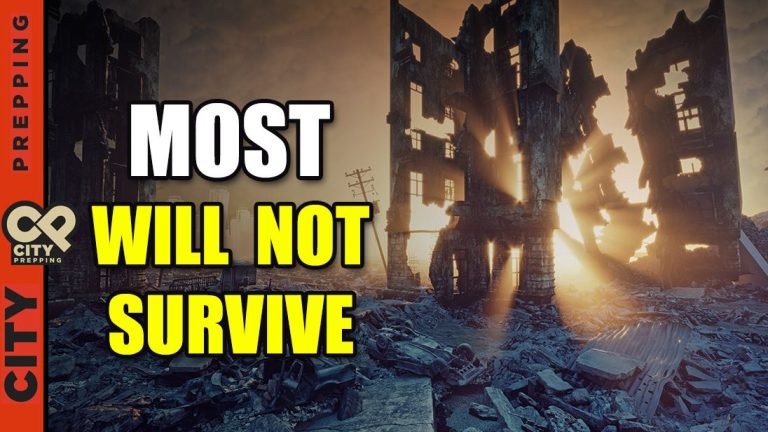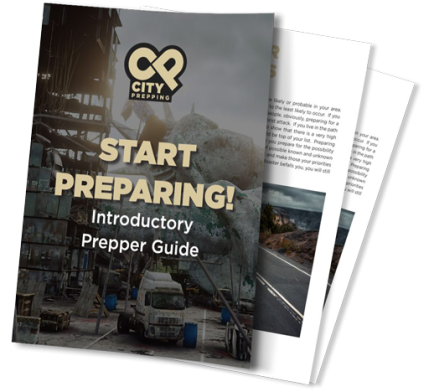 First, here’s a brief lesson on what an earthquake is, so we can go into this fully understanding what we are up against. An earthquake is defined as “a sudden and violent shaking of the ground, sometimes causing great destruction, as a result of movements within the earth’s crust or volcanic action. ” Basically, where two large volumes of land or rock meet each other, a fracture zone occurs. This is referred to as a fault line. Faults allow the two large blocks of rock to move relative to each other. Sometimes this movement is in very small and unnoticed smooth sliding. Sometimes they stick or hang up a bit for a period, build pressure, and then release in a more significant movement as the rock on one side of the fault suddenly slips with respect to the other. The resulting dramatic movement of even a few inches or feet can result in an earthquake.
To understand the type of shake, fault lines are classified. There are many types of faults classified by the movement of the blocks of rock, up, down, left, or right, relative to each other. The specific tectonic process at work with each of the areas I will cover in this video I will address as I define them. The final thing you need to know about earthquakes concerning their classification is their magnitude. Earthquakes are measured by magnitude and intensity. Intensity is a measure of the overall shaking and damage and can vary by location based upon the land’s makeup. The other well-known measurement is the magnitude. This was measured using the Richter scale from one to nine. The Richter Scale only measured the most significant amplitude of a quake, so seismologists have replaced it with the Moment Magnitude Scale, which measures different parts of the earthquake. I t’s based on the Modified Mercalli Intensity scale and lists quakes on a scale of 1 to 12. The Moment Magnitude scale measures the body wave magnitude and surface wave magnitudes and the Richter magnitude at the localized level and then presents a more comprehensive number that defines the wave’s magnitude. There’s a lot that goes into that, so it can be better understood by understanding the numbers one through nine on the Richter scale and the extent of damage that can occur from each of them from the Mercalli scale.
Throughout the world, it is estimated that a half-million earthquakes occur per year. The Earth is constantly shifting, but most of these movements go undetected because their magnitude is low or it occurs in remote places. When it comes to low magnitude, a magnitude one quake, you probably wouldn’t feel anything even if you were sitting still in a stable environment.
The Richter scale goes from one to nine and, not to oversimplify it, but each level is about ten times greater than the level before and has about thirty-three times the amount of energy being released. If you get to nine on the scale, the equivalent energy released is comparable to 20 trillion tons of TNT. The bomb dropped on Hiroshima was between 13 and 15 kilotons, so a nine on the scale is almost inconceivably larger than that historic blast. When you consider there are a thousand thousands in a million, and there are a thousand millions in a billion, and a thousand billions in a trillion, then multiply the whole thing by twenty, and, well…let’ s just say that the Earth is a pretty powerful ball of built-up, kinetic energy. Be thankful that those minor quakes occur, so a big one is less likely.
A Word About Destruction
First, here’s a brief lesson on what an earthquake is, so we can go into this fully understanding what we are up against. An earthquake is defined as “a sudden and violent shaking of the ground, sometimes causing great destruction, as a result of movements within the earth’s crust or volcanic action. ” Basically, where two large volumes of land or rock meet each other, a fracture zone occurs. This is referred to as a fault line. Faults allow the two large blocks of rock to move relative to each other. Sometimes this movement is in very small and unnoticed smooth sliding. Sometimes they stick or hang up a bit for a period, build pressure, and then release in a more significant movement as the rock on one side of the fault suddenly slips with respect to the other. The resulting dramatic movement of even a few inches or feet can result in an earthquake.
To understand the type of shake, fault lines are classified. There are many types of faults classified by the movement of the blocks of rock, up, down, left, or right, relative to each other. The specific tectonic process at work with each of the areas I will cover in this video I will address as I define them. The final thing you need to know about earthquakes concerning their classification is their magnitude. Earthquakes are measured by magnitude and intensity. Intensity is a measure of the overall shaking and damage and can vary by location based upon the land’s makeup. The other well-known measurement is the magnitude. This was measured using the Richter scale from one to nine. The Richter Scale only measured the most significant amplitude of a quake, so seismologists have replaced it with the Moment Magnitude Scale, which measures different parts of the earthquake. I t’s based on the Modified Mercalli Intensity scale and lists quakes on a scale of 1 to 12. The Moment Magnitude scale measures the body wave magnitude and surface wave magnitudes and the Richter magnitude at the localized level and then presents a more comprehensive number that defines the wave’s magnitude. There’s a lot that goes into that, so it can be better understood by understanding the numbers one through nine on the Richter scale and the extent of damage that can occur from each of them from the Mercalli scale.
Throughout the world, it is estimated that a half-million earthquakes occur per year. The Earth is constantly shifting, but most of these movements go undetected because their magnitude is low or it occurs in remote places. When it comes to low magnitude, a magnitude one quake, you probably wouldn’t feel anything even if you were sitting still in a stable environment.
The Richter scale goes from one to nine and, not to oversimplify it, but each level is about ten times greater than the level before and has about thirty-three times the amount of energy being released. If you get to nine on the scale, the equivalent energy released is comparable to 20 trillion tons of TNT. The bomb dropped on Hiroshima was between 13 and 15 kilotons, so a nine on the scale is almost inconceivably larger than that historic blast. When you consider there are a thousand thousands in a million, and there are a thousand millions in a billion, and a thousand billions in a trillion, then multiply the whole thing by twenty, and, well…let’ s just say that the Earth is a pretty powerful ball of built-up, kinetic energy. Be thankful that those minor quakes occur, so a big one is less likely.
A Word About Destruction
 But what of the destruction at each level? The Modified Mercalli Intensity scale defines this well. It correlates to the Richter scale but measures the intensity and resultant aftermath. It has twelve levels. At levels one and two, it isn’t felt except under the most optimal conditions. Level three may be felt by a few people not engaged in movement and on the upper floors of buildings. Level four is light and can be felt by many indoors. Dishes may rattle. It may sound like a truck driving by or striking a building. Lev–el five and above is felt by everyone in the area. At level five, some damage to dishes, objects, and windows may occur. Level six, defined as strong, can actually move heavy furniture and will cause slight damage.
At level seven, poorly constructed or older buildings will start to see some damage. Level eight and that damage is severe. Only earthquake-reinforced structures will likely sustain no damage. Level nine is severe. Chimneys and factory stacks will fall, and some buildings will collapse. Level ten is extreme; some well-built wooden structures will be destroyed; most masonry and frame structures will be destroyed with their foundations. Gas lines without automatic seismic shutoff valves installed are likely to break. Levels ten, eleven, and twelve are all categorized as extreme. They’re equivalent to a long earthquake at an eight or nine on the Richter scale. At level eleven, broad fissures can open up on the ground, maybe not as extreme as you see in the movies where they’re gobbling people up but still capable of causing radical damage. At level twelve, equivalent to a nine or above, and nothing is left undamaged or possibly even standing. Destruction is total. Every municipal system–water, electricity, gas, sewer, communication, transit, and so on–will sustain damage, interruptions, and possibly systemic failure for an indeterminable length of time. The seismic force waves can be seen traveling across the landscape across the surface, and objects are thrown into the air.
Fortunately, those massive, once-in-a-lifetime quakes are a rarity. Besides the shaking, an earthquake can cause soil liquefaction, landslides, fires, ground ruptures, floods, and tsunamis with dramatic and devastating effects thousands of miles from the epicenter. You may not live in a tsunami zone, but you can imagine how dangerous it could be to you if a gas line is fractured and the roads and bridges are impassable.
Is your plan for any disaster to bug in and stand your ground? If you are adequately prepared, that might work in most disasters. It may not, though, in the aftermath of an earthquake. If your home and all your neighbors’ homes are just piles of rubble on top of a concrete foundation, you may need to leave the area for personal safety and return when fires are out, and water, gas, and electrical lines are repaired or shut off.
Whose Fault Line Is It?
But what of the destruction at each level? The Modified Mercalli Intensity scale defines this well. It correlates to the Richter scale but measures the intensity and resultant aftermath. It has twelve levels. At levels one and two, it isn’t felt except under the most optimal conditions. Level three may be felt by a few people not engaged in movement and on the upper floors of buildings. Level four is light and can be felt by many indoors. Dishes may rattle. It may sound like a truck driving by or striking a building. Lev–el five and above is felt by everyone in the area. At level five, some damage to dishes, objects, and windows may occur. Level six, defined as strong, can actually move heavy furniture and will cause slight damage.
At level seven, poorly constructed or older buildings will start to see some damage. Level eight and that damage is severe. Only earthquake-reinforced structures will likely sustain no damage. Level nine is severe. Chimneys and factory stacks will fall, and some buildings will collapse. Level ten is extreme; some well-built wooden structures will be destroyed; most masonry and frame structures will be destroyed with their foundations. Gas lines without automatic seismic shutoff valves installed are likely to break. Levels ten, eleven, and twelve are all categorized as extreme. They’re equivalent to a long earthquake at an eight or nine on the Richter scale. At level eleven, broad fissures can open up on the ground, maybe not as extreme as you see in the movies where they’re gobbling people up but still capable of causing radical damage. At level twelve, equivalent to a nine or above, and nothing is left undamaged or possibly even standing. Destruction is total. Every municipal system–water, electricity, gas, sewer, communication, transit, and so on–will sustain damage, interruptions, and possibly systemic failure for an indeterminable length of time. The seismic force waves can be seen traveling across the landscape across the surface, and objects are thrown into the air.
Fortunately, those massive, once-in-a-lifetime quakes are a rarity. Besides the shaking, an earthquake can cause soil liquefaction, landslides, fires, ground ruptures, floods, and tsunamis with dramatic and devastating effects thousands of miles from the epicenter. You may not live in a tsunami zone, but you can imagine how dangerous it could be to you if a gas line is fractured and the roads and bridges are impassable.
Is your plan for any disaster to bug in and stand your ground? If you are adequately prepared, that might work in most disasters. It may not, though, in the aftermath of an earthquake. If your home and all your neighbors’ homes are just piles of rubble on top of a concrete foundation, you may need to leave the area for personal safety and return when fires are out, and water, gas, and electrical lines are repaired or shut off.
Whose Fault Line Is It?
 So, you must prepare for any known fault line you are in proximity to or living above or near. You should also prepare if you are within a few hundred miles of one of these zones. An extreme quake on one of these known fault lines could result in damage and destruction hundreds of miles away. A giant earthquake on Missouri’s New Madrid fault, for instance, could be felt as far away as the East coast, so it is in your best interest to be prepared for the big one. Here is the quick list of known faults and seismic zones that could have the most significant potential for a sizable earthquake in our lifetimes.
So, you must prepare for any known fault line you are in proximity to or living above or near. You should also prepare if you are within a few hundred miles of one of these zones. An extreme quake on one of these known fault lines could result in damage and destruction hundreds of miles away. A giant earthquake on Missouri’s New Madrid fault, for instance, could be felt as far away as the East coast, so it is in your best interest to be prepared for the big one. Here is the quick list of known faults and seismic zones that could have the most significant potential for a sizable earthquake in our lifetimes.
1 – San Andreas Fault
 The San Andreas fault is well known because it has consistently produced greater than magnitude 6.0 quakes in 1857, 1881, 1901, 1922, 1934, 1996, and 2004. It and runs the length of California. There are hundreds of other faults that feed into the San Andreas or bump out of San Andreas. Some of those other faults may actually be more likely to generate a big one. This is a tectonic boundary between the Pacific Plate and the North American Plate, a right-lateral strike-slip or horizontal motioned fault. According to the research done by the scientific community, the San Andreas is way overdue for a big one. Living in Southern California, it’s a shadow that hangs over us constantly.
The San Andreas fault is well known because it has consistently produced greater than magnitude 6.0 quakes in 1857, 1881, 1901, 1922, 1934, 1996, and 2004. It and runs the length of California. There are hundreds of other faults that feed into the San Andreas or bump out of San Andreas. Some of those other faults may actually be more likely to generate a big one. This is a tectonic boundary between the Pacific Plate and the North American Plate, a right-lateral strike-slip or horizontal motioned fault. According to the research done by the scientific community, the San Andreas is way overdue for a big one. Living in Southern California, it’s a shadow that hangs over us constantly.
2- Cascadia Subduction Zone
 The Cascadia Subduction Zone starts off Mendocino, California, and runs off the coast of northern California, Oregon, and Washington to the north end of Vancouver Island, Canada. Being way out there in the Pacific might make you feel safe. You will have a false sense of security if you do feel safe. Here, instead of moving sideways, the North American plate is sliding over the top of the Pacific Plate. The Pacific Plate is being forced under the North American Plate and turned eventually into magma while pushing up the Olympic Mountains and the Cascades. This is a millions of years process that is in continual motion. So long as that goes smoothly, there’s just an occasional earthquake. When it gets stuck or hung up and then suddenly corrects, massive earthquakes, tsunamis, and even volcanic activity can occur. When it goes off again, seismologists expect a magnitude nine earthquake to last five minutes or longer. According to geologists, the quakes come every 250 years on average, but the intervals are highly variable. Every 250 years or so, a big earthquake of 9.0 is overdue by about 70 years. Unlike much of California, the Pacific Northwest is not as retrofitted and earthquake-proofed. A large magnitude earthquake would destroy many buildings and bridges.
The Cascadia Subduction Zone starts off Mendocino, California, and runs off the coast of northern California, Oregon, and Washington to the north end of Vancouver Island, Canada. Being way out there in the Pacific might make you feel safe. You will have a false sense of security if you do feel safe. Here, instead of moving sideways, the North American plate is sliding over the top of the Pacific Plate. The Pacific Plate is being forced under the North American Plate and turned eventually into magma while pushing up the Olympic Mountains and the Cascades. This is a millions of years process that is in continual motion. So long as that goes smoothly, there’s just an occasional earthquake. When it gets stuck or hung up and then suddenly corrects, massive earthquakes, tsunamis, and even volcanic activity can occur. When it goes off again, seismologists expect a magnitude nine earthquake to last five minutes or longer. According to geologists, the quakes come every 250 years on average, but the intervals are highly variable. Every 250 years or so, a big earthquake of 9.0 is overdue by about 70 years. Unlike much of California, the Pacific Northwest is not as retrofitted and earthquake-proofed. A large magnitude earthquake would destroy many buildings and bridges.
3- The Denali Fault
 It’s easy to forget about Alaska and its earthquakes because they’re so far up North, not connected to the contiguous United States, sparsely populated, and they have several earthquakes every day. It’s worth mentioning here because it is so active and so violent. Like with the Cascadia Subduction Zone, the Pacific Plate is actively sliding under the North American Plate. Magnitude 7, 8, and 9 earthquakes are typical every year along the Aleutian Islands. The Denali Fault, even 2,000 miles or more away from you, is worth watching.
It’s easy to forget about Alaska and its earthquakes because they’re so far up North, not connected to the contiguous United States, sparsely populated, and they have several earthquakes every day. It’s worth mentioning here because it is so active and so violent. Like with the Cascadia Subduction Zone, the Pacific Plate is actively sliding under the North American Plate. Magnitude 7, 8, and 9 earthquakes are typical every year along the Aleutian Islands. The Denali Fault, even 2,000 miles or more away from you, is worth watching.
4- Salt Lake City Wasatch Fault
 The Wasatch f ault is located in central Utah and southeast Idaho, along the Basin and Range Province’s eastern edge. At least 23 magnitude seven quakes have hit these segments over the past 6500 years – an average of a big shakeup every 300 years. The fault zone is overdue for another 7.0. Because of the earthquakes’ infrequency, most buildings and bridges, as in the Pacific Northwest, are not hardened against earthquakes.
The Wasatch f ault is located in central Utah and southeast Idaho, along the Basin and Range Province’s eastern edge. At least 23 magnitude seven quakes have hit these segments over the past 6500 years – an average of a big shakeup every 300 years. The fault zone is overdue for another 7.0. Because of the earthquakes’ infrequency, most buildings and bridges, as in the Pacific Northwest, are not hardened against earthquakes.
5- New Madrid and Wabash Valley Seismic Zones
 In the United States’ western regions, earthquake fault lines can stretch for hundreds of miles, and many fault lines often feed into or buttress against more prominent fault lines. However, in the central and eastern United States, faults are clustered together to create seismic zones and are deeper within the Earth. Though the New Madrid fault is still well known, other seismic zones could release their energy at any time when the conditions are right. Today, a magnitude seven would destroy many bridges and structures. This area’s structures are not designed with modern earthquake-resistant methods like shear walls, cross braces, diaphragms, and moment-resisting frames. Not much is known about these fault areas because they are deep within the Earth. What is known is that they aren’t dormant, and they have the potential for a 7.0 or greater at any time that could impact a vast region.
In the United States’ western regions, earthquake fault lines can stretch for hundreds of miles, and many fault lines often feed into or buttress against more prominent fault lines. However, in the central and eastern United States, faults are clustered together to create seismic zones and are deeper within the Earth. Though the New Madrid fault is still well known, other seismic zones could release their energy at any time when the conditions are right. Today, a magnitude seven would destroy many bridges and structures. This area’s structures are not designed with modern earthquake-resistant methods like shear walls, cross braces, diaphragms, and moment-resisting frames. Not much is known about these fault areas because they are deep within the Earth. What is known is that they aren’t dormant, and they have the potential for a 7.0 or greater at any time that could impact a vast region.
6- East Tennessee Seismic Zone
 Moving even further East is the East Tennessee Se ismic Zone. The source of seismic activity in the East Tennessee Seismic Zone is not well known. The zone is located far from the North American continent’s edge and represents a mid-continent or intraplate earthquake zone. The known faults are generally ancient, and no known active faults reach the surface. While those are not big earthquakes and are not likely to cause dramatic damage, seismologists warn that earthquakes as large as 7.5 are possible. Also, they seem to be occurring with greater frequency and regularity, which brings us to our final fault zone–the yet undiscovered fault zone.
Moving even further East is the East Tennessee Se ismic Zone. The source of seismic activity in the East Tennessee Seismic Zone is not well known. The zone is located far from the North American continent’s edge and represents a mid-continent or intraplate earthquake zone. The known faults are generally ancient, and no known active faults reach the surface. While those are not big earthquakes and are not likely to cause dramatic damage, seismologists warn that earthquakes as large as 7.5 are possible. Also, they seem to be occurring with greater frequency and regularity, which brings us to our final fault zone–the yet undiscovered fault zone.
7- The Yet Undiscovered Fault Zones
 Unknown fault zones could soon be awakened by man made activity. This could explain some of the heightened activity in the East Tennessee Seismic Zone. If you have ever seen up close a fault line deep in the earth, you would see that many are identifiable by the super fine sand that runs along them. This is because millions of years of slow grinding have created that fine sand. When we humans engage in fracking by pumping millions of gallons of fluids into the Earth, we may wash that fault line buffer away, which results in some slipping. Also, when we pull too much from aquifers, we decrease the downward pressure on the plate that is under the aquifer. This can result in the plate rising ever so slightly and impacting other tectonic movements.
Fracking intentionally causes thousands of small earthquakes of magnitudes smaller than 1 to enhance permeability, but it has also been linked to larger earthquakes. The largest earthquake known to be induced by hydraulic fracturing in the United States was a magnitude four earthquake in Texas. Each earthquake causes pressure to be released off one line and transferred to another line or another plate. Reawakening prehistoric fault lines and adding stress to existing ones is probably not the best practice. Beginning in 2009, Oklahoma experienced a surge in seismicity. This surge was so significant that its rate of magnitude three and larger earthquakes exceeded California’s from 2014 through 2017. Texas had a 4.0 magnitude earthquake as a result of fracking. We don’t know what the possible cumulative effect of these human activity generated earthquakes may be. We know that they occur in areas where the buildings are not hardened off, and the impact of a big earthquake could quickly rise to a catastrophe-level.
Conclusion
Do you live within 500 miles of one of those zones? If a magnitude eight or greater earthquake strikes, you can expect massive destruction in areas not hardened off against earthquakes. Even if you live miles from the epicenter, you can expect services to go offline and possibly even refugees from bordering states. Having an earthquake kit prepared in your prepping supplies will help you if the big one does hit, and you can use it for a host of other disasters or even bug out with it. The next blog in this two-part blog series which I’ll link to in the description section and the cards above.
Have you ever been in a big earthquake? Have old members of your family? If you’re not in the United States, do you have earthquakes in your region?
As always, please stay safe out there.
Unknown fault zones could soon be awakened by man made activity. This could explain some of the heightened activity in the East Tennessee Seismic Zone. If you have ever seen up close a fault line deep in the earth, you would see that many are identifiable by the super fine sand that runs along them. This is because millions of years of slow grinding have created that fine sand. When we humans engage in fracking by pumping millions of gallons of fluids into the Earth, we may wash that fault line buffer away, which results in some slipping. Also, when we pull too much from aquifers, we decrease the downward pressure on the plate that is under the aquifer. This can result in the plate rising ever so slightly and impacting other tectonic movements.
Fracking intentionally causes thousands of small earthquakes of magnitudes smaller than 1 to enhance permeability, but it has also been linked to larger earthquakes. The largest earthquake known to be induced by hydraulic fracturing in the United States was a magnitude four earthquake in Texas. Each earthquake causes pressure to be released off one line and transferred to another line or another plate. Reawakening prehistoric fault lines and adding stress to existing ones is probably not the best practice. Beginning in 2009, Oklahoma experienced a surge in seismicity. This surge was so significant that its rate of magnitude three and larger earthquakes exceeded California’s from 2014 through 2017. Texas had a 4.0 magnitude earthquake as a result of fracking. We don’t know what the possible cumulative effect of these human activity generated earthquakes may be. We know that they occur in areas where the buildings are not hardened off, and the impact of a big earthquake could quickly rise to a catastrophe-level.
Conclusion
Do you live within 500 miles of one of those zones? If a magnitude eight or greater earthquake strikes, you can expect massive destruction in areas not hardened off against earthquakes. Even if you live miles from the epicenter, you can expect services to go offline and possibly even refugees from bordering states. Having an earthquake kit prepared in your prepping supplies will help you if the big one does hit, and you can use it for a host of other disasters or even bug out with it. The next blog in this two-part blog series which I’ll link to in the description section and the cards above.
Have you ever been in a big earthquake? Have old members of your family? If you’re not in the United States, do you have earthquakes in your region?
As always, please stay safe out there. 





